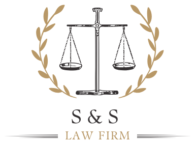Brief “Professional Ethics & Professional Accounting System

Unit I: Background to Legal Profession
- Historical Development:
Trace the evolution of the legal profession in India from colonial times to post-independence reforms. - Professional Ethics:
Definition and necessity of ethical norms in the legal profession to ensure justice, integrity, and public confidence. - Standards of Conduct:
Standards of professional behavior and courtroom etiquette as per the Bar Council of India Rules. - Key Case – Re Vinay Chandra Mishra:
A landmark judgment that shaped disciplinary actions and set a precedent for maintaining ethics in the profession. - Trust in the Profession:
How adherence to ethical values maintains the dignity of the legal system and earns public trust. - Professional Misconduct – SCBA v. Union of India:
Discusses the boundaries and repercussions of misconduct, reinforcing the need for discipline. - Importance of Ethics:
Ethical behavior safeguards the legal system’s credibility and client interest. - Challenges:
External pressures, corruption, commercialization, and conflicting interests that make ethical adherence difficult.
Unit II: Status and Duties of Advocates
- Qualities of a Good Advocate:
Integrity, legal acumen, communication skills, and empathy as traits contributing to success. - Eligibility Criteria:
Qualifications and disqualifications for enrolment as per the Advocates Act, 1961. - Rights and Duties:
Right to practice, duties to the court, client, and society under Sections of the Advocates Act. - Bench-Bar Relations – Smt. Harbans Kaur v. P.C. Chaturvedi:
Emphasizes mutual respect and cooperation for smooth judicial functioning. - Role in Rule of Law – Charan Lal Sahu v. Union of India:
Advocates act as defenders of constitutional values and fundamental rights. - Client Responsibility:
Confidentiality, competence, honesty, and avoidance of conflict of interest. - Duties to Court and Opponent:
Decorum, fairness, and non-interference with justice delivery. - Unethical Practices:
Consequences like declining trust, loss of respect, and legal penalties.
Unit III: Bar Councils
- Establishment and Functions:
Formation and mandate of Bar Council of India (BCI) and State Bar Councils under the Advocates Act. - Regulatory Powers of BCI:
Rule-making, professional conduct, legal education regulation, and disciplinary control. - Functions of State Bar Councils:
Enrolment of advocates, managing professional conduct, and organizing welfare schemes. - Key Case – Harish Chandra Tiwari v. Baiju:
Discusses the jurisdiction and duties of Bar Councils. - Disciplinary Role – Bhupendra Kumar Sharma v. Bar Council, Pathankot:
Clarifies disciplinary proceedings and authority of Bar Councils. - Promotion of Legal Education:
Oversight of law schools, curriculum, and standards in legal academia. - Relationship Between BCI & State Councils:
Coordination and delegation of responsibilities for regulation and governance. - Critical Analysis:
Examine issues like politicization, inefficiency, and delay in disciplinary actions.
Unit IV: Professional Misconduct and Contempt
- Definition and Consequences:
Misconduct under Section 35 of the Advocates Act and the consequences such as suspension or disbarment. - Types of Contempt:
Civil and criminal contempt, especially when committed by legal professionals. - Powers of Bar Councils:
Authority to investigate and penalize misconduct through disciplinary committees. - High Court’s Power – D.C. Saxena v. Chief Justice of India:
Clarifies the contempt jurisdiction and limits of acceptable criticism. - Contempt and M.B. Sanghi v. Punjab & Haryana HC:
Reiterates that personal attacks on judges by lawyers amount to contempt. - Contempt Procedure:
Initiation, investigation, and trial of contempt proceedings against advocates. - Freedom of Speech vs. Contempt:
Balance between free expression and the integrity of the judicial process. - Evaluation of Disciplinary Committees:
Effectiveness, transparency, and need for reforms in handling complaints and misconduct.
History of Professional Ethics and Professional Accounting System (with reference to the legal profession in India)
I. Professional Ethics: Historical Overview
1. Ancient and Medieval Roots
- Dharma-based Systems:
In ancient India, legal responsibility was rooted in Dharma (moral duty), where Brahmins and Kshatriyas acted as judges or arbitrators guided by scriptures like the Manusmriti, Arthashastra, and Dharmashastras. - No Separate Legal Profession:
Law was not a separate profession; individuals appeared on behalf of others out of moral obligation.
2. British Colonial Period (18th – 20th Century)
- Creation of Legal Profession:
With the establishment of Supreme Courts in Calcutta, Bombay, and Madras (1774 onwards), British laws formalized the legal profession in India. - Legal Practitioners Act, 1846:
Allowed Indians to enroll as legal practitioners but provided no clear ethical framework. - Indian Bar Councils Act, 1926:
Introduced statutory bodies to regulate advocates. However, regulation of professional ethics remained fragmented and inconsistent.
3. Post-Independence Reforms
- Advocates Act, 1961:
A landmark legislation that unified the legal profession and established the Bar Council of India (BCI) and State Bar Councils. - Introduced Rules on Standards of Professional Conduct and Etiquette (under Section 49(1)(c) of the Advocates Act).
- Ethical Codification:
BCI created a comprehensive code of conduct for advocates, covering: - Duties towards court, client, and public.
- Prohibition on advertising, fee sharing, and misconduct.
4. Landmark Cases
- Re: Vinay Chandra Mishra (1995):
Upheld the need for strict enforcement of professional ethics. The Supreme Court suspended an advocate for contempt. - Supreme Court Bar Association v. Union of India (1998):
Reinforced that only Bar Councils can discipline lawyers, and not the judiciary.
II. Professional Accounting System: Historical Development
1. Early Systems
- Traditional Record-Keeping:
Indian merchants and service providers, including early lawyers, used simple ledgers and bahi-khatas to track income and expenditure. - Lack of Regulation:
Before independence, there was minimal regulation of financial records in legal practice.
2. Emergence of Formal Systems
- Post-1961 Framework:
After the Advocates Act, lawyers were expected to maintain trust accounts, client accounts, and professional accounts separately. - Bar Council Rules:
Advocates must keep: - Separate accounts for client funds.
- Records of fees, case expenses, and retainers.
3. Integration with Tax and Audit Laws
- Income Tax Act (1961):
Legal professionals required to maintain books of accounts if income exceeds prescribed limits. - GST and Modern Compliance (Post-2017):
Advocates providing services above a threshold limit must comply with GST registration and invoicing.
4. Contemporary Relevance
- Digital Accounting Tools:
Increasing use of tools like Tally, Zoho Books, and legal-specific software for accounting and time tracking. - Ethics and Accounting Overlap:
Misappropriation of client funds or financial malpractice is not only a financial wrong but also professional misconduct under Bar Council rules.
Conclusion
The history of professional ethics in India reflects a journey from moral-based duties in ancient India to codified conduct under modern legal frameworks. The professional accounting system evolved from informal methods to a structured system aligned with ethical and legal obligations.
Both are vital pillars that ensure:
- Integrity of the legal profession
- Transparency in client relationships
- Public confidence in justice delivery
